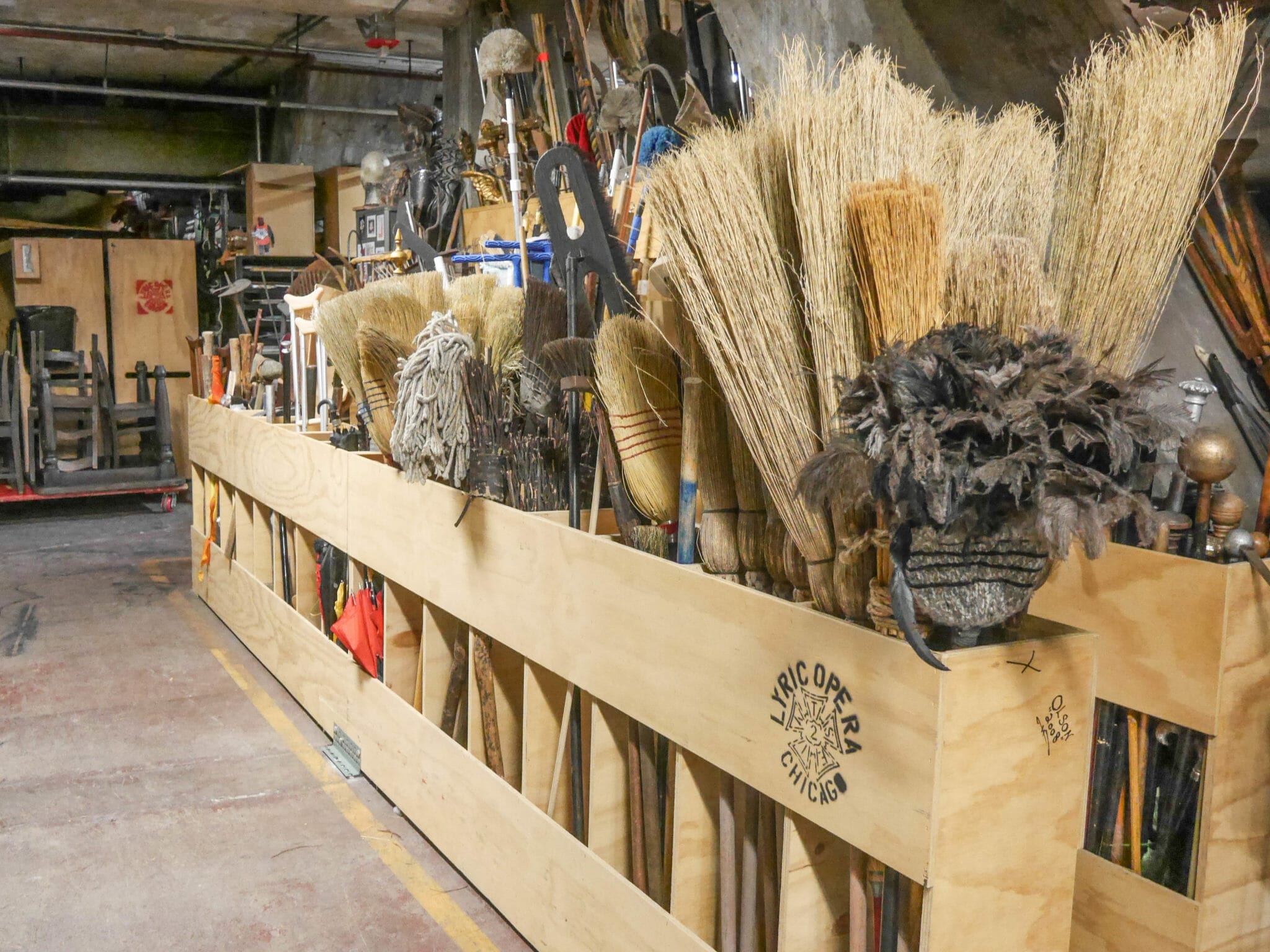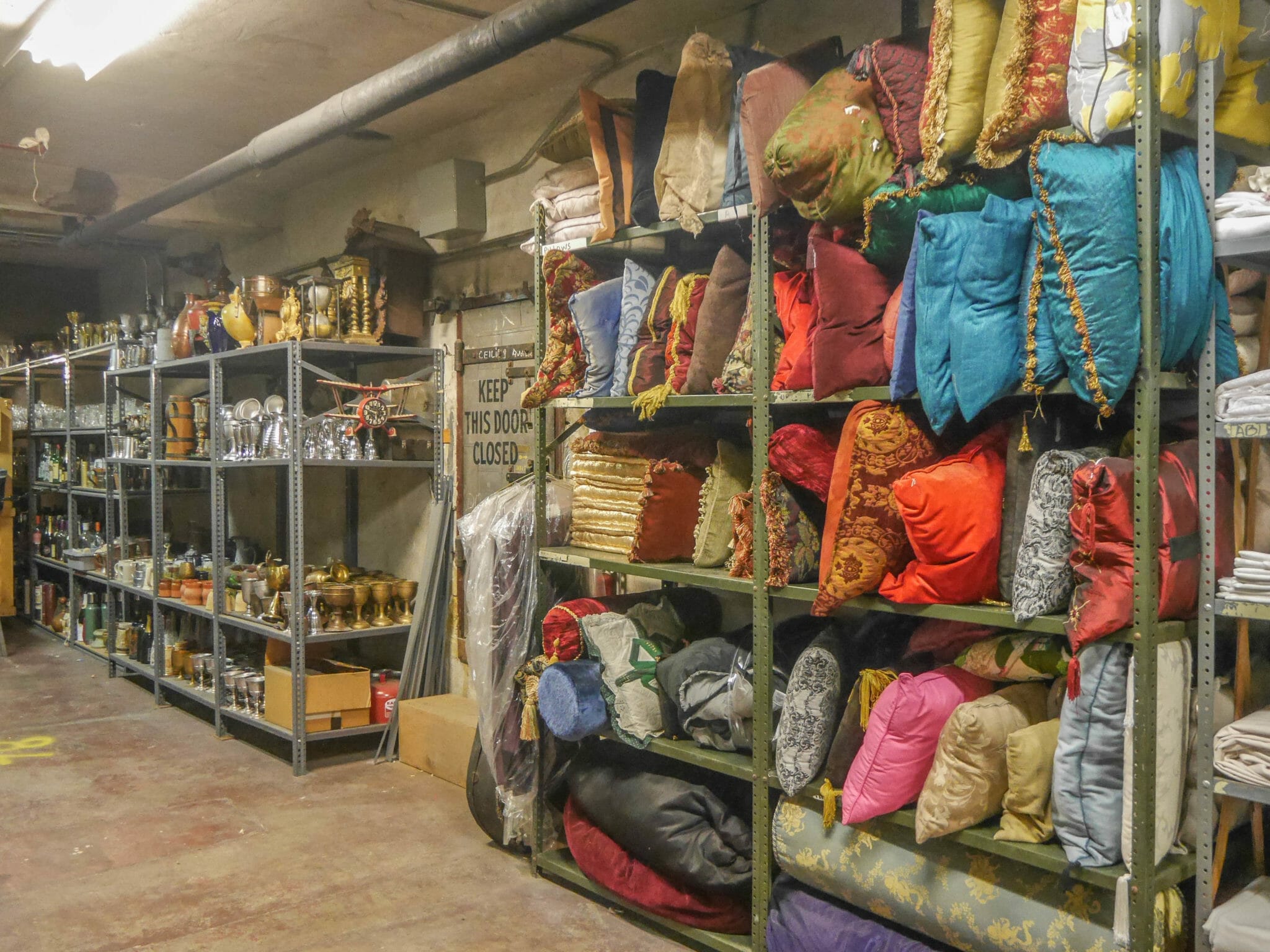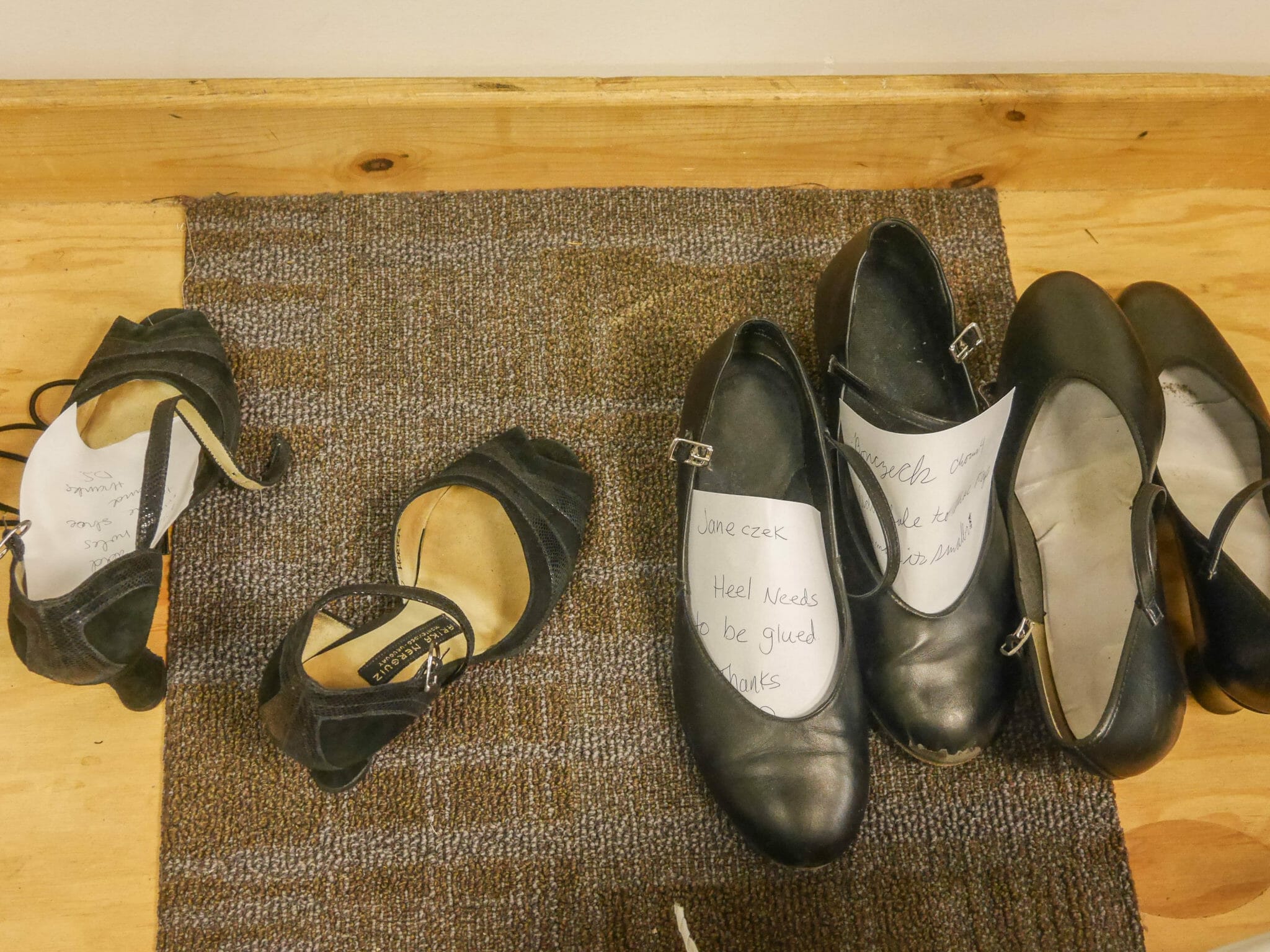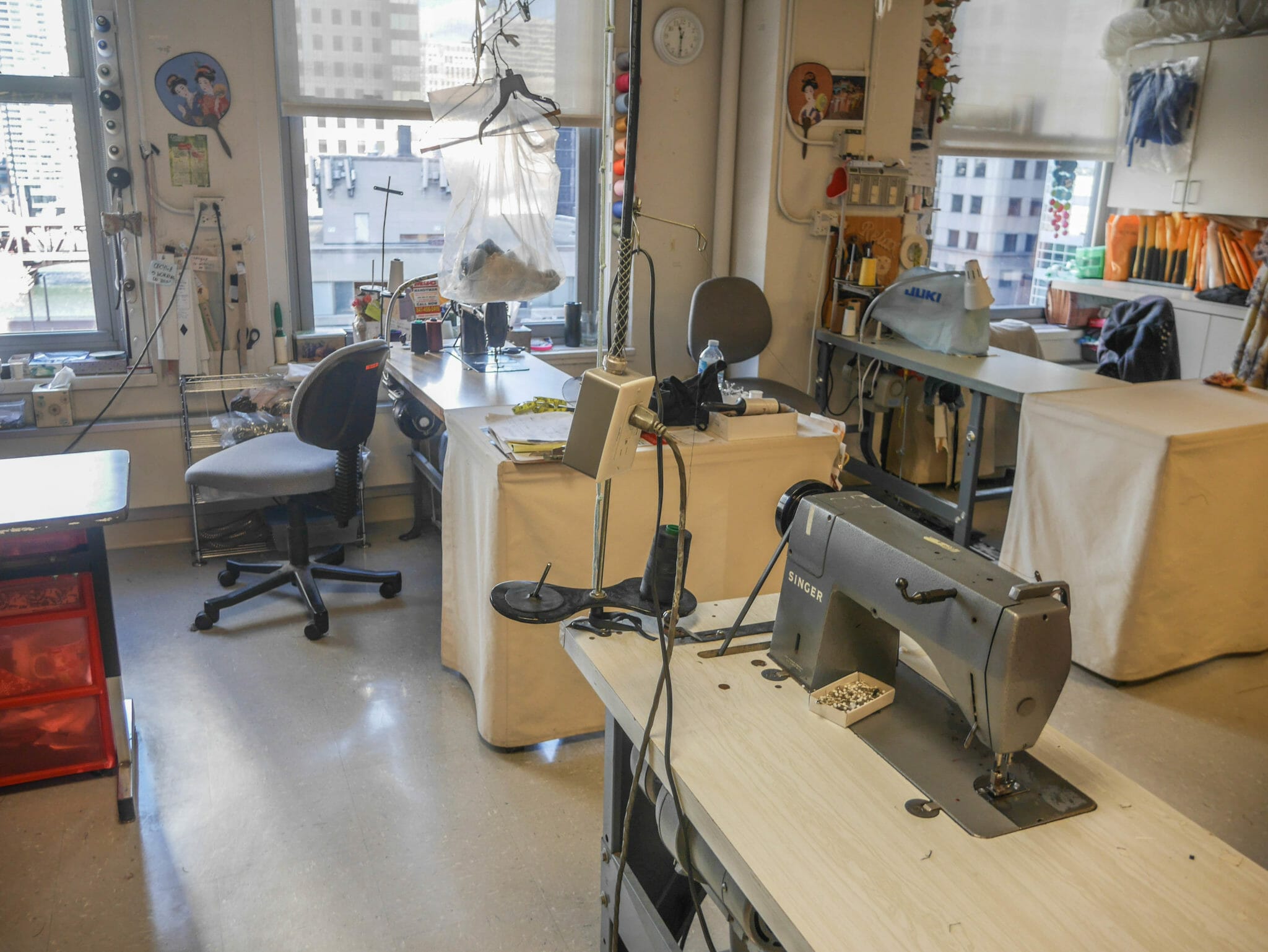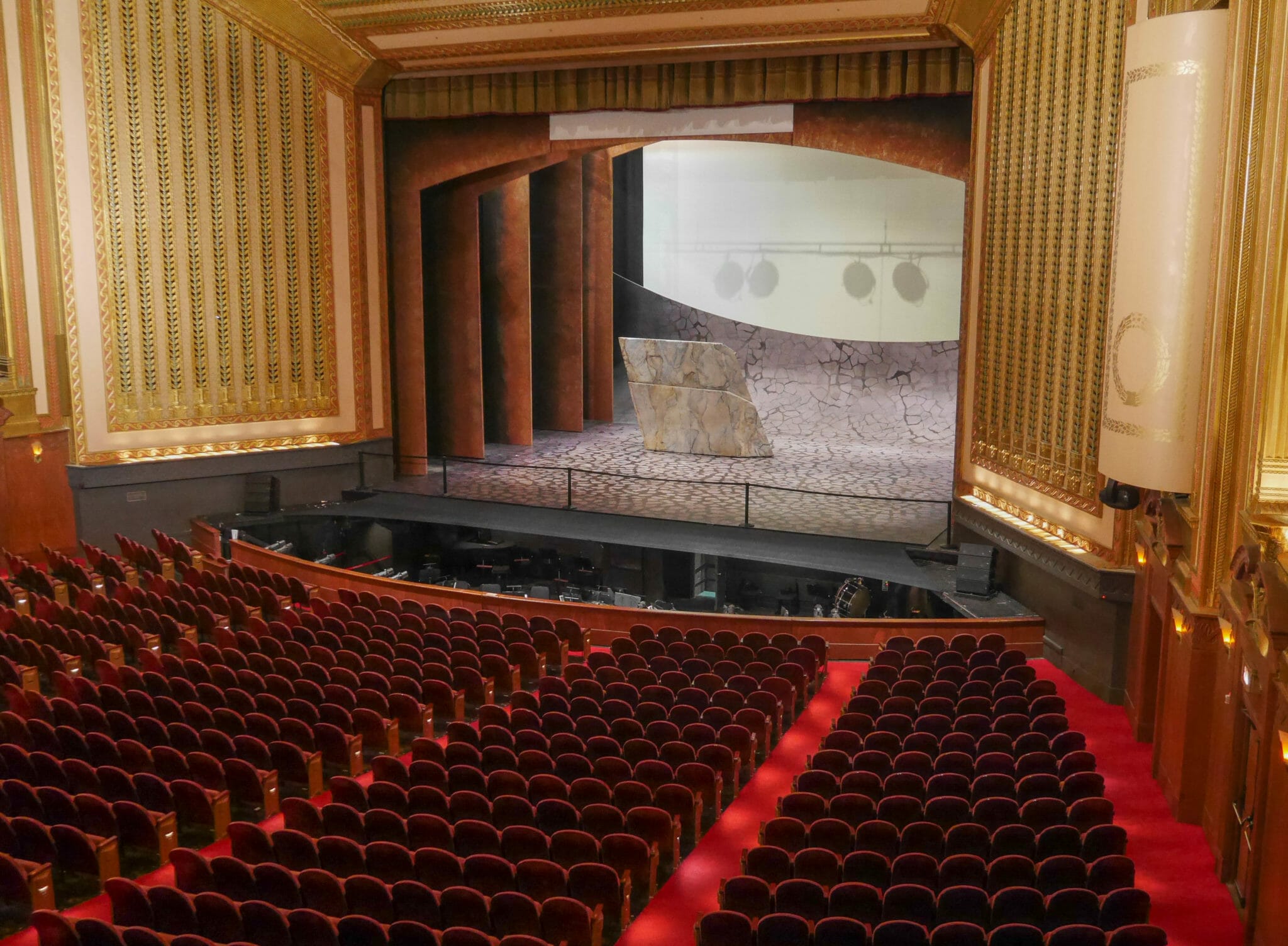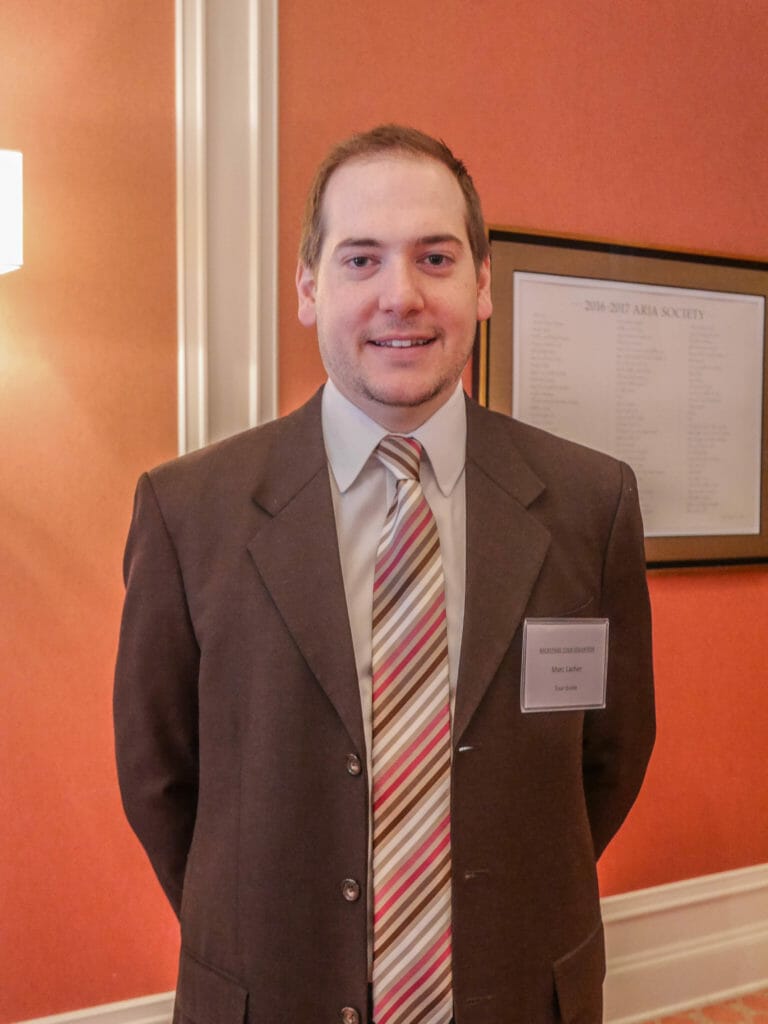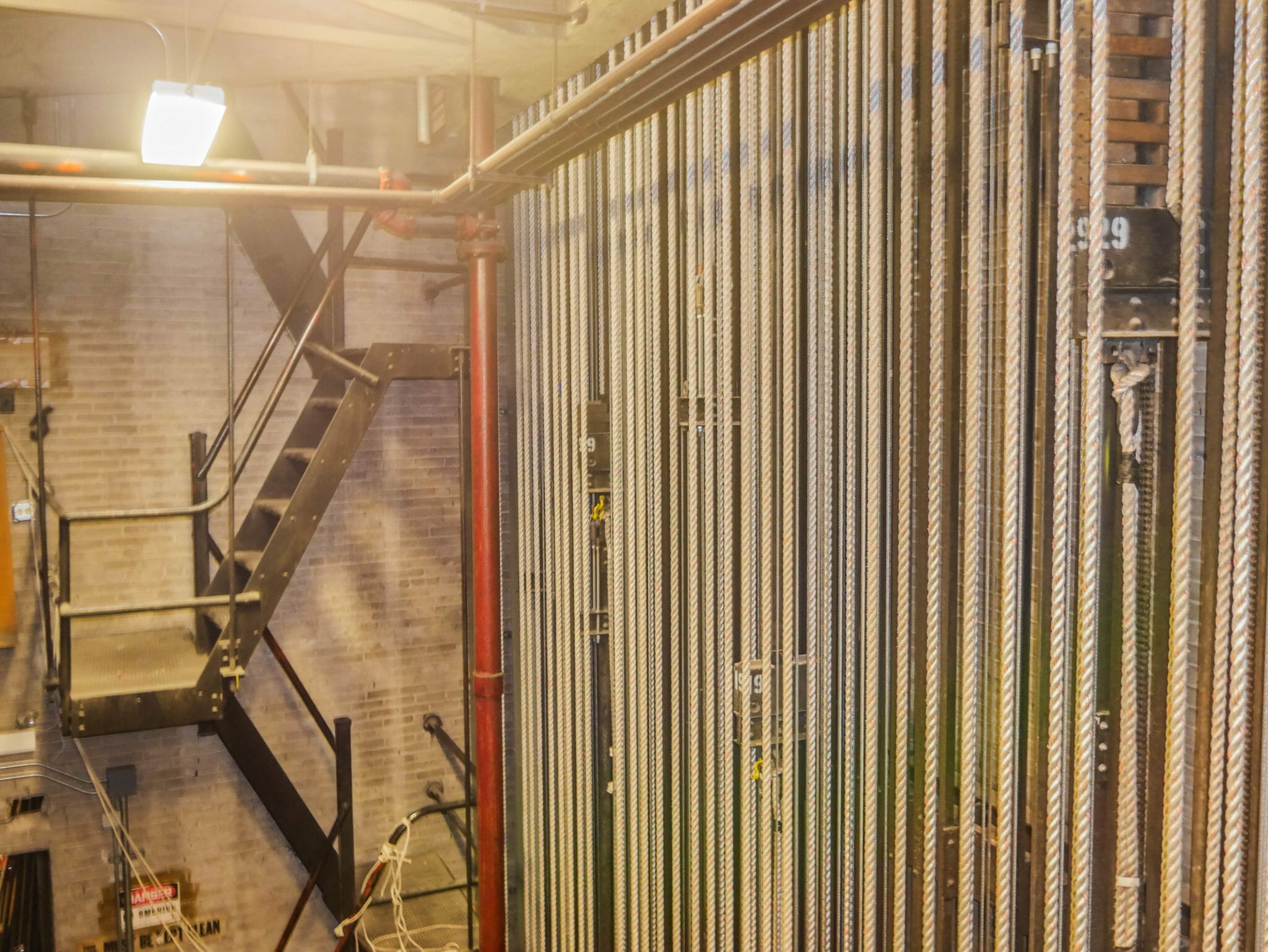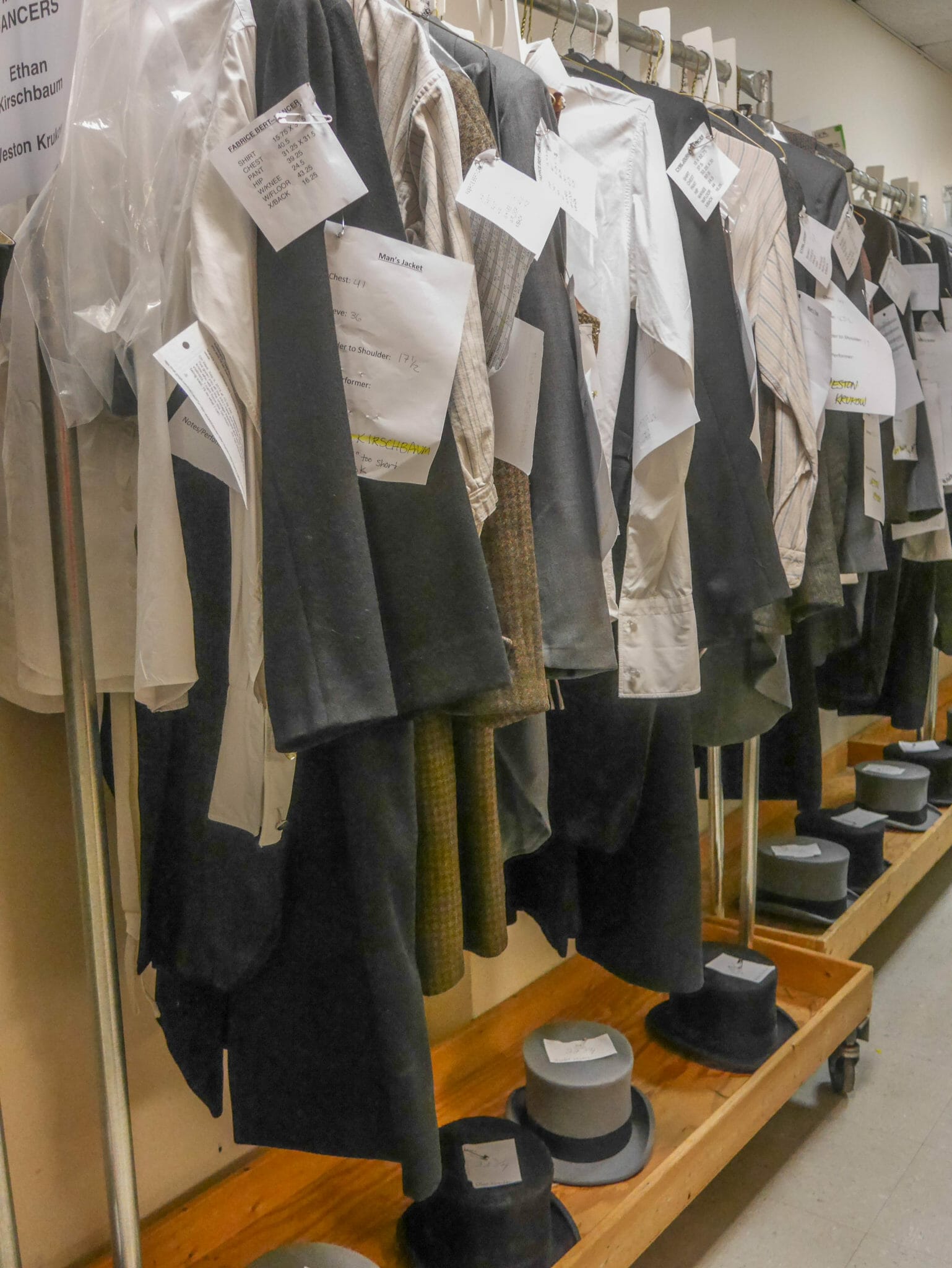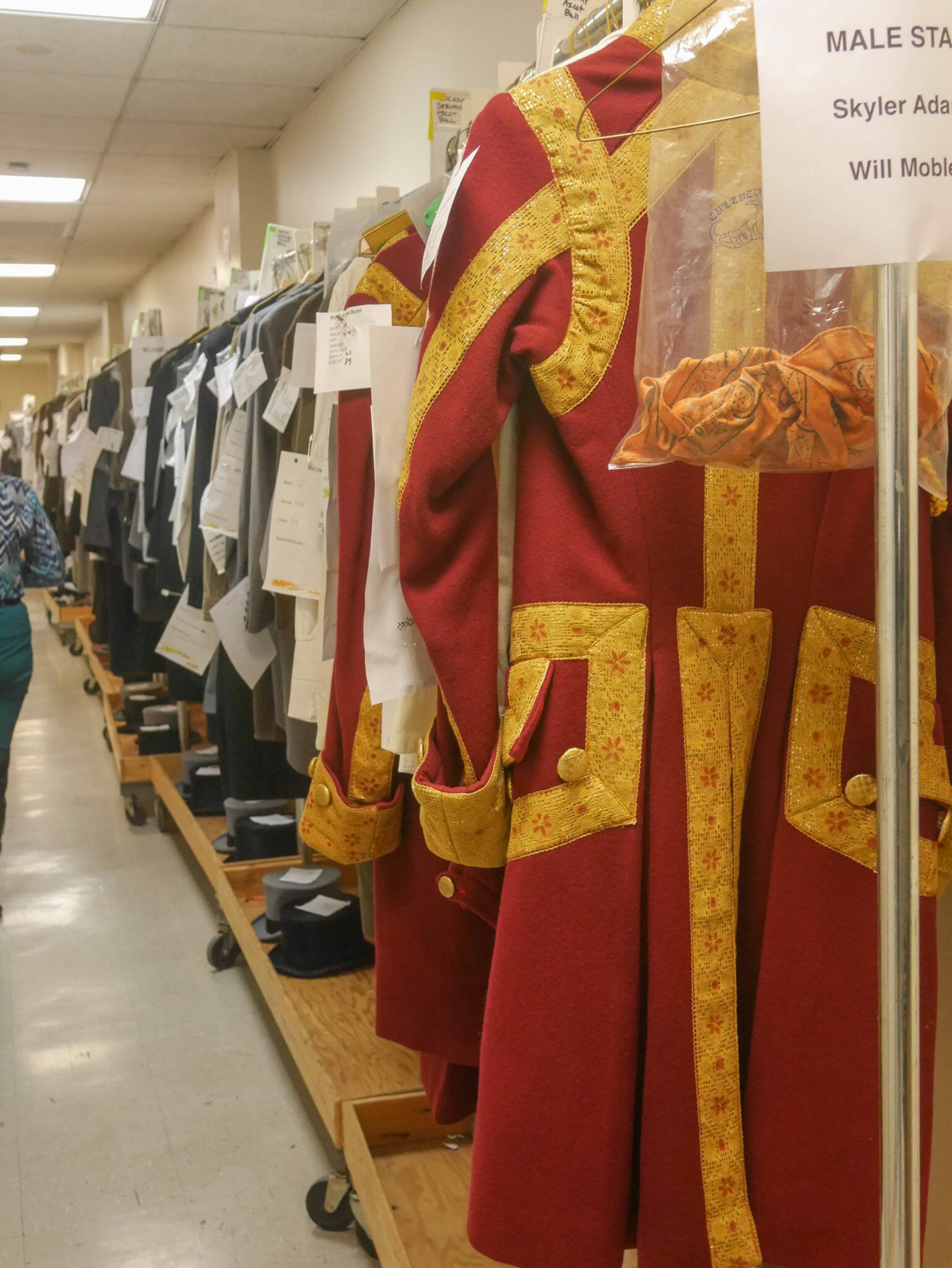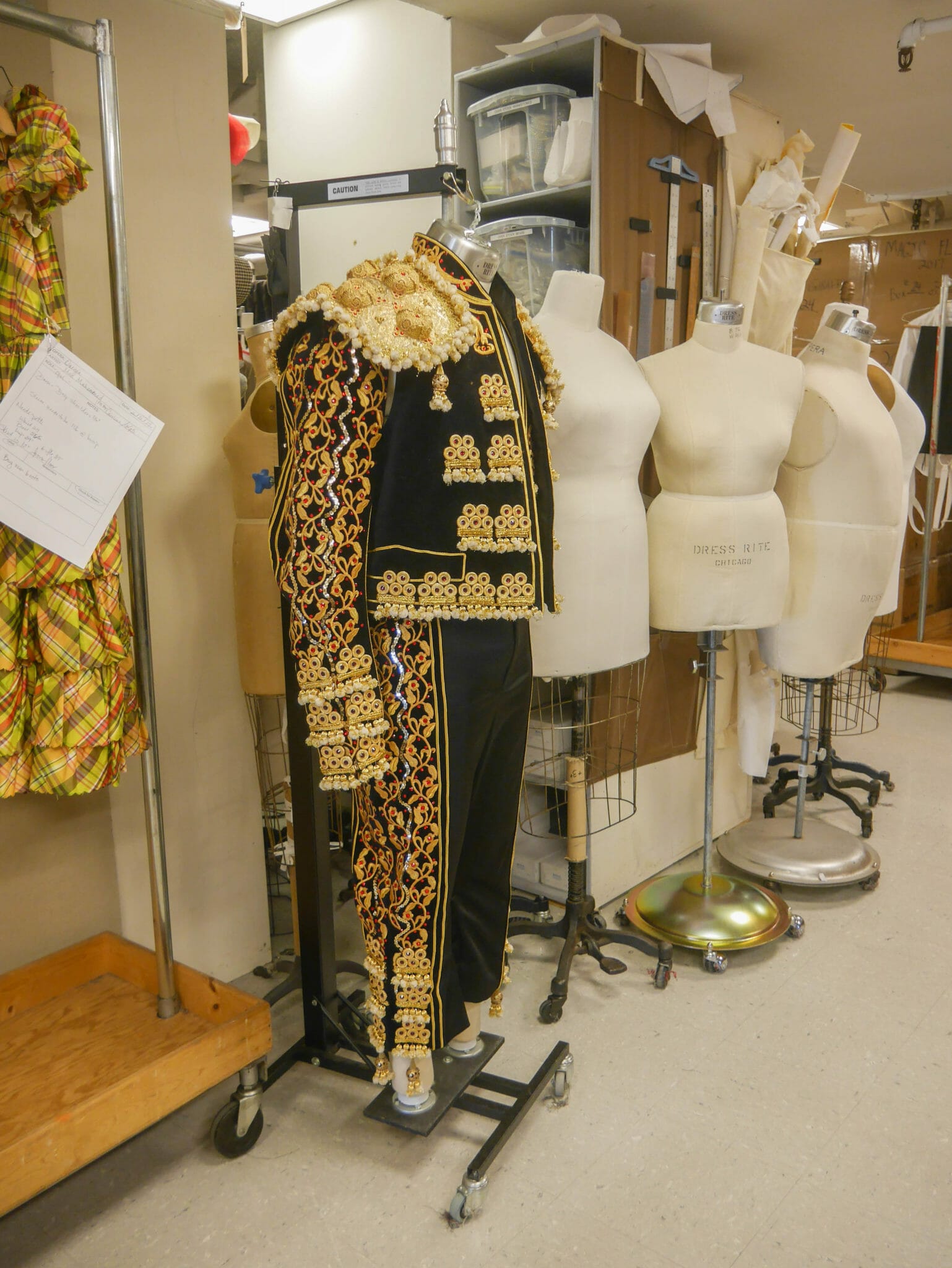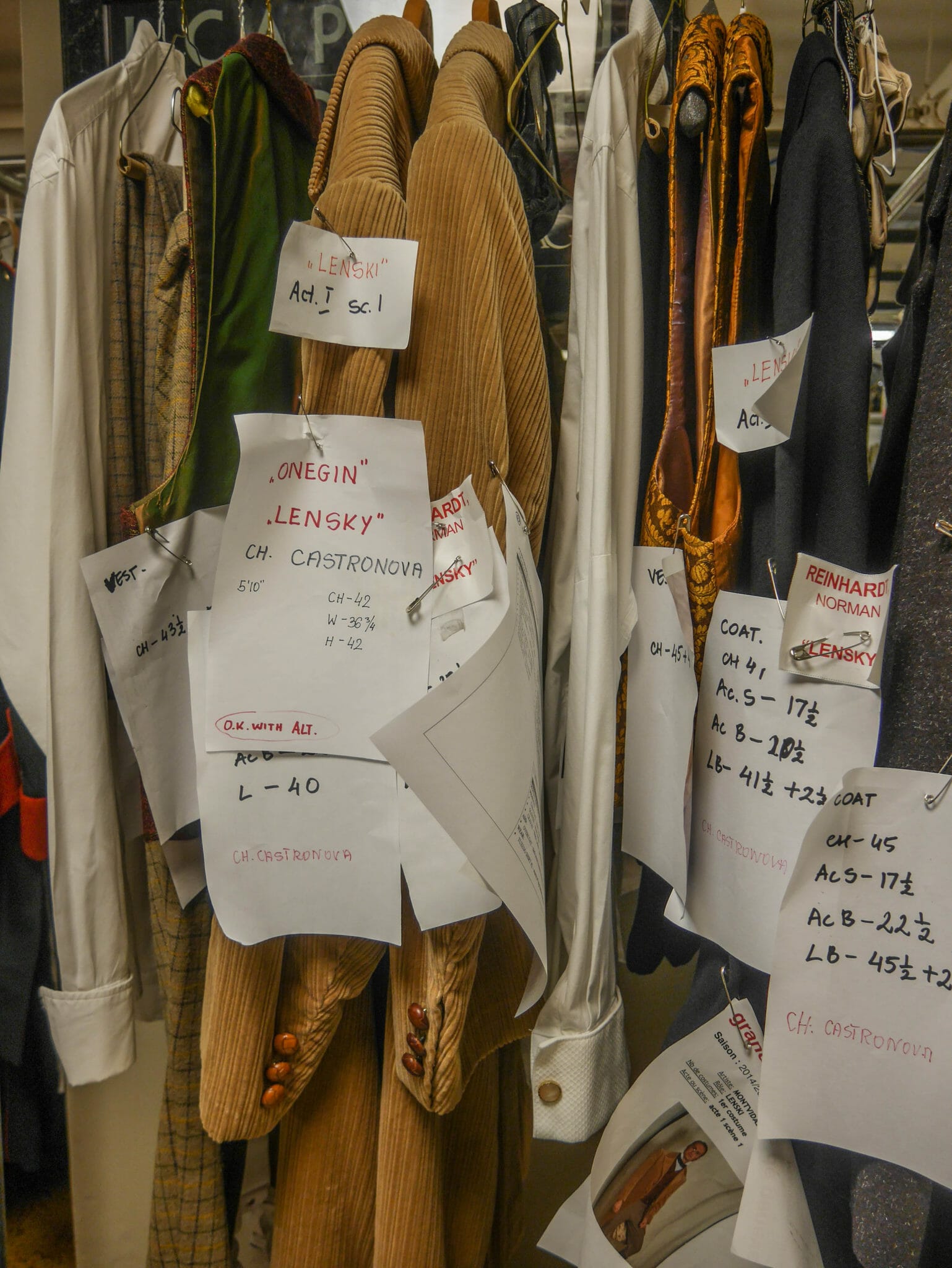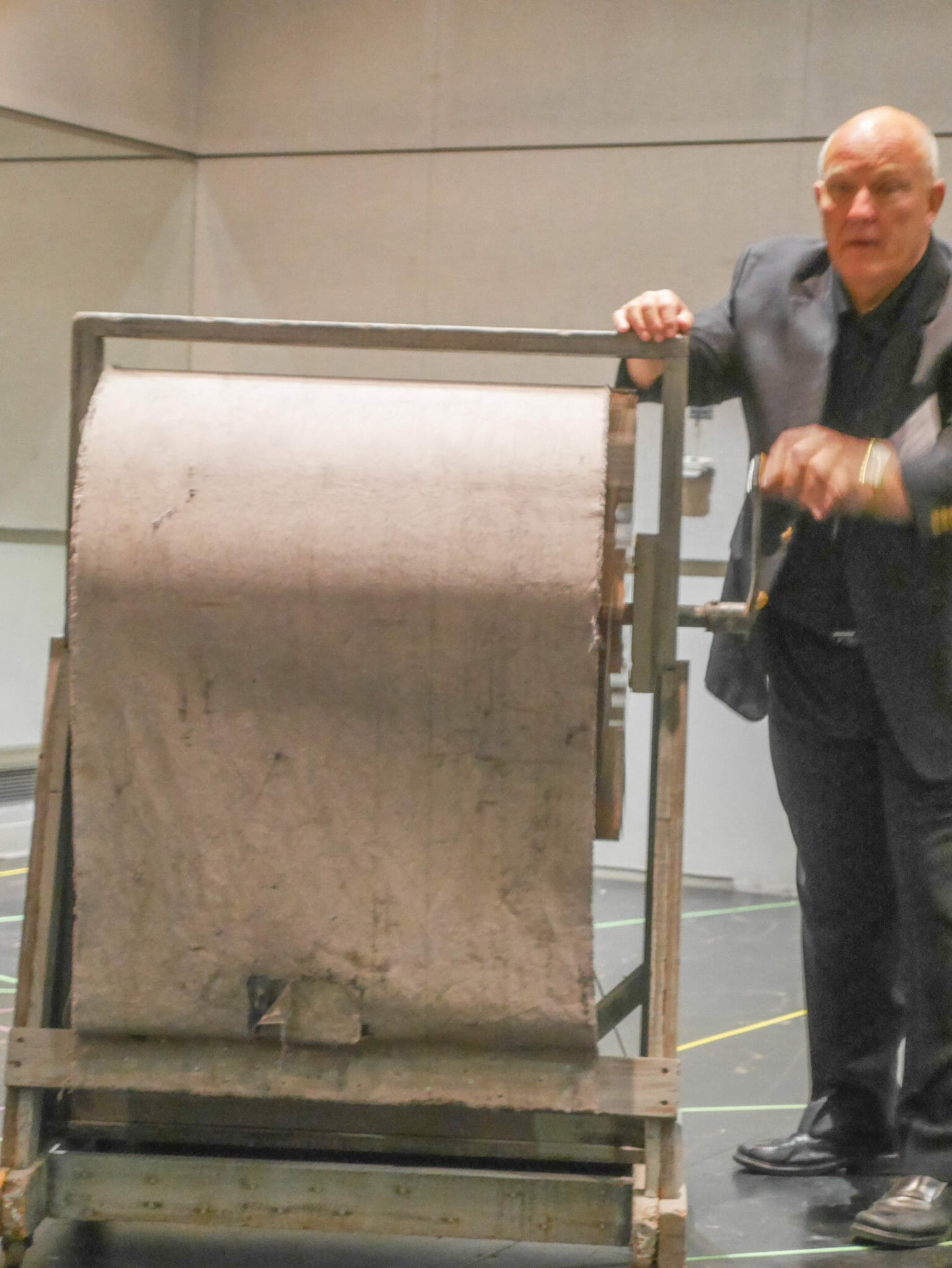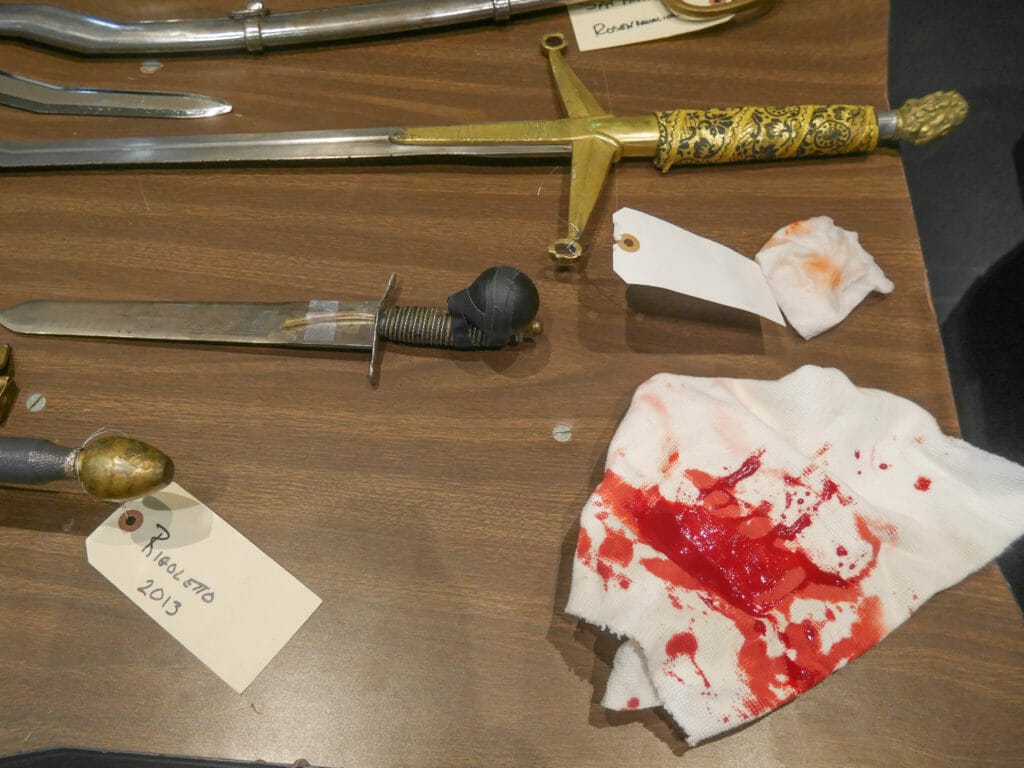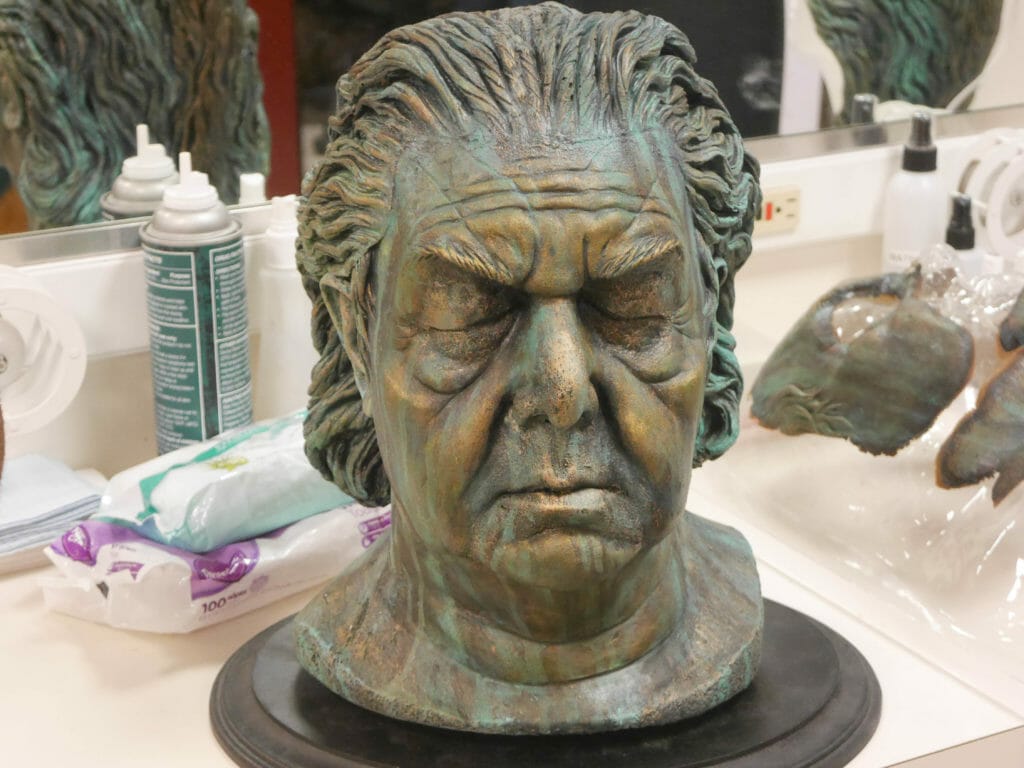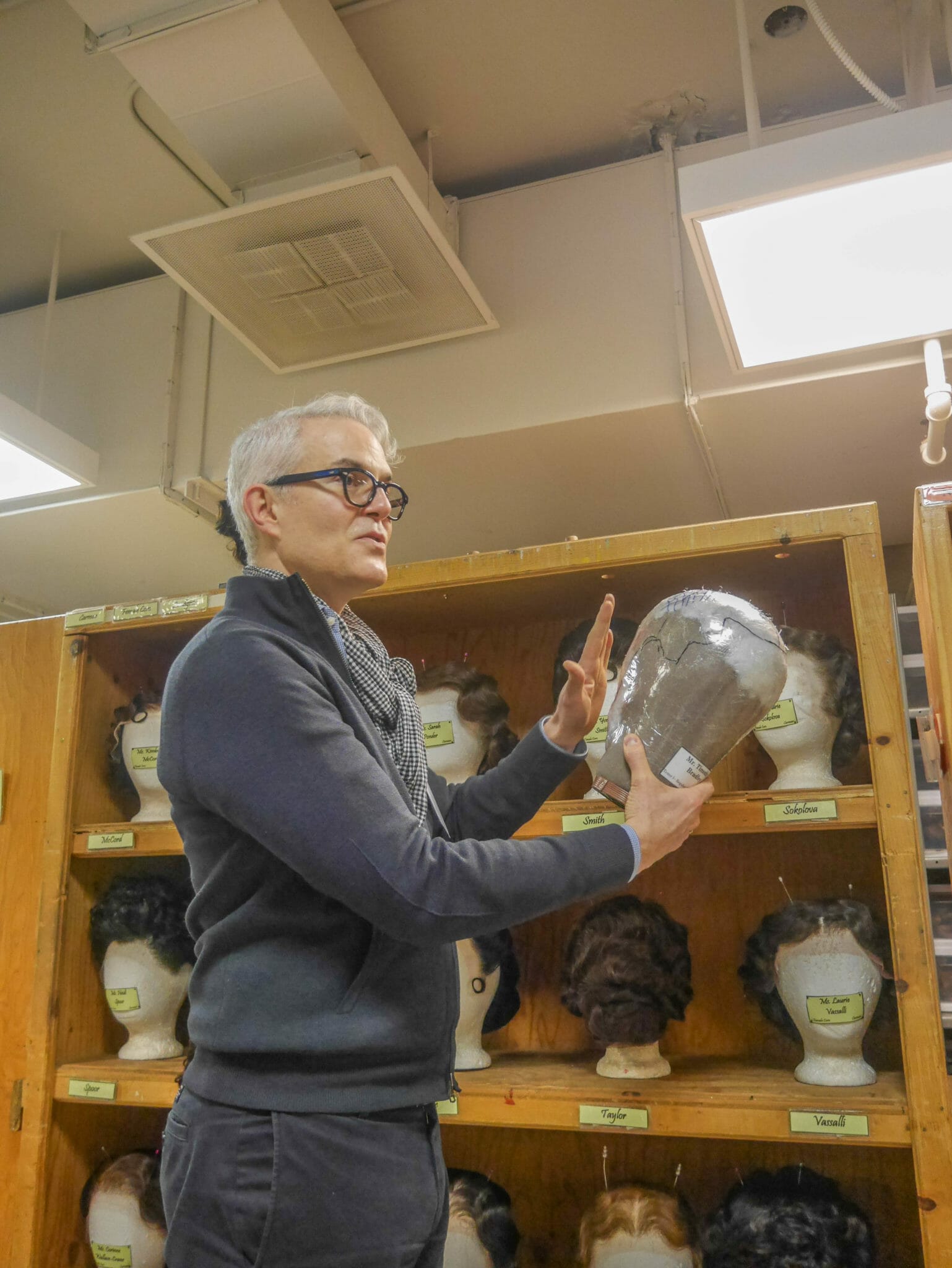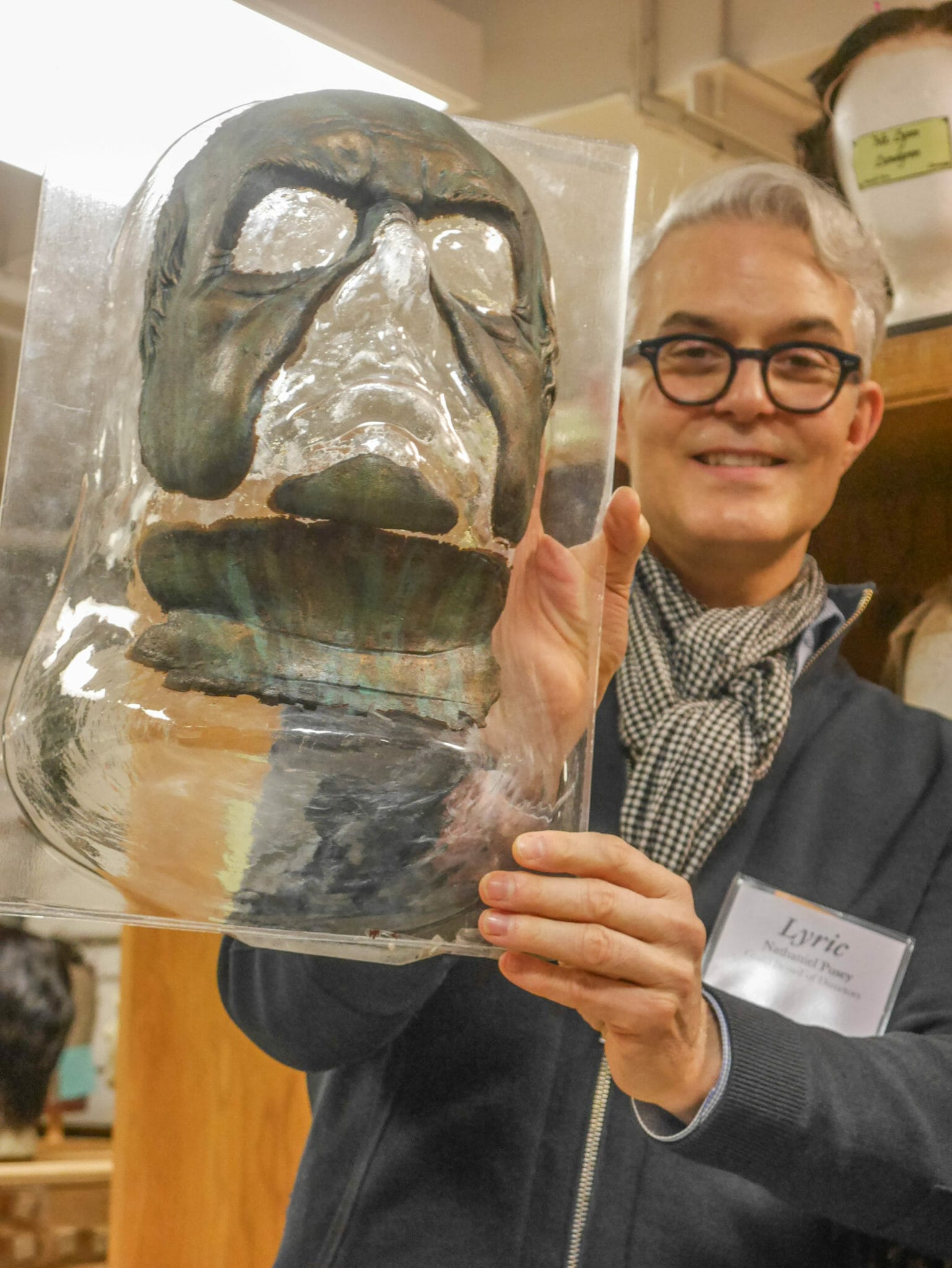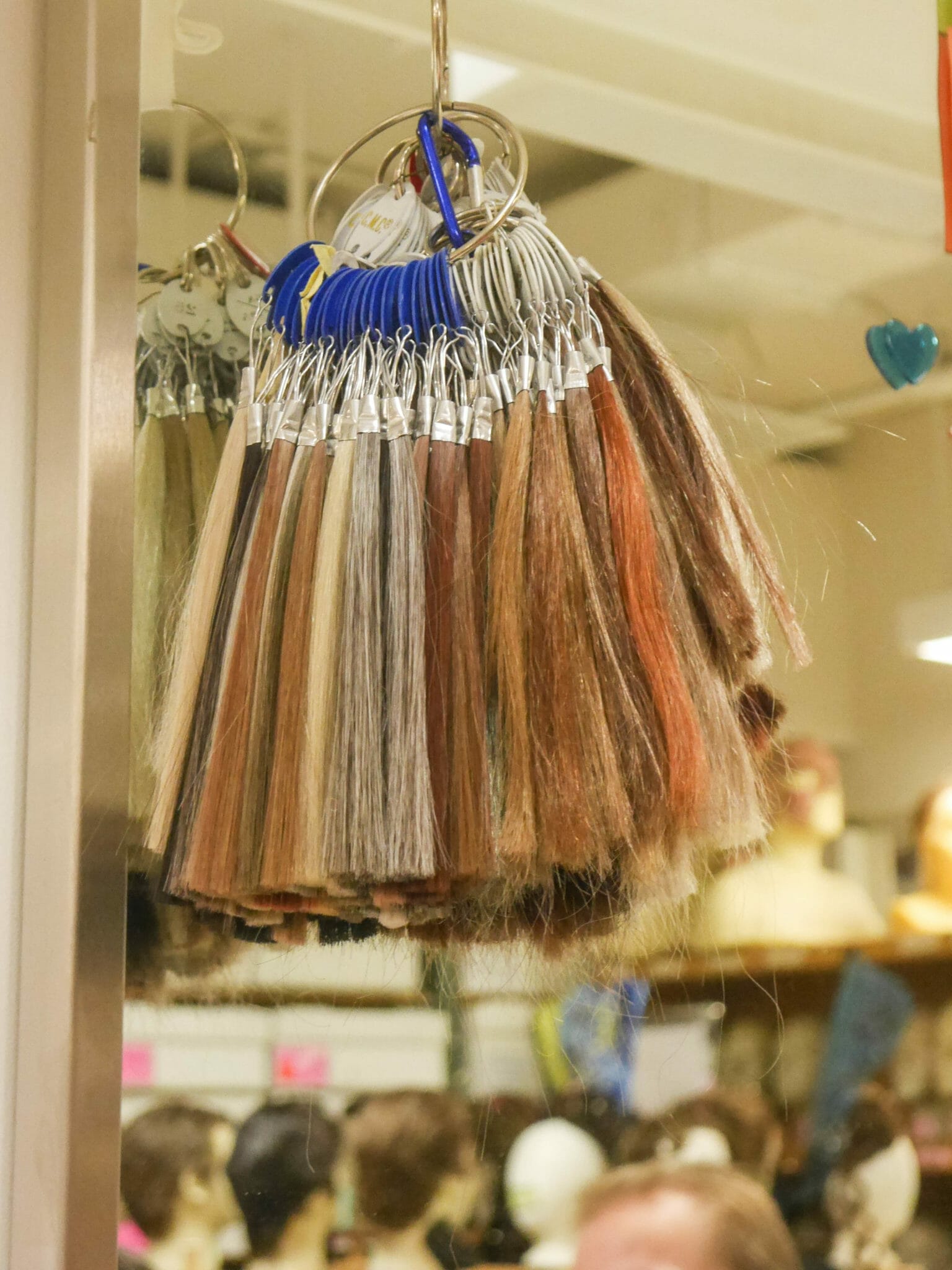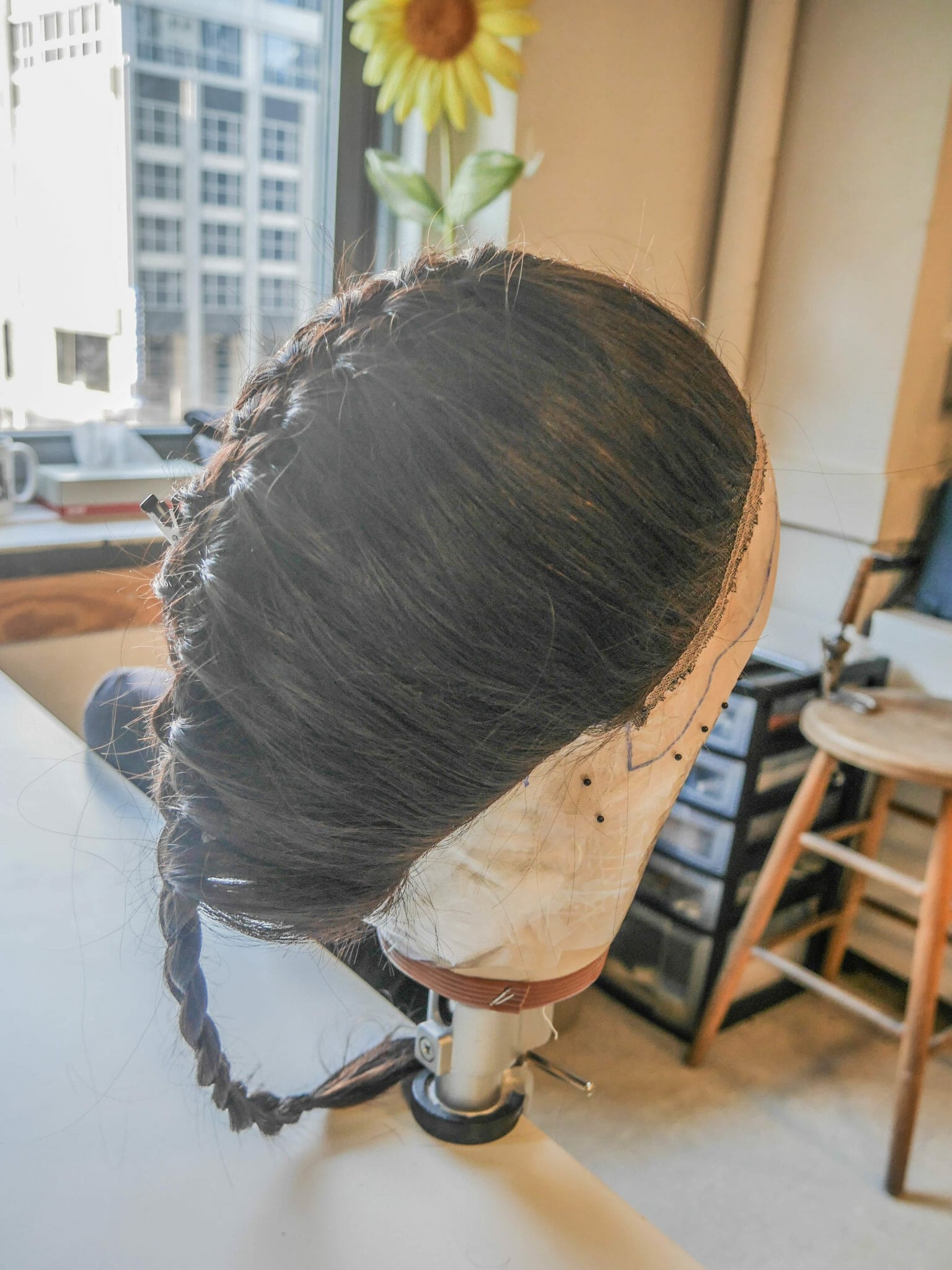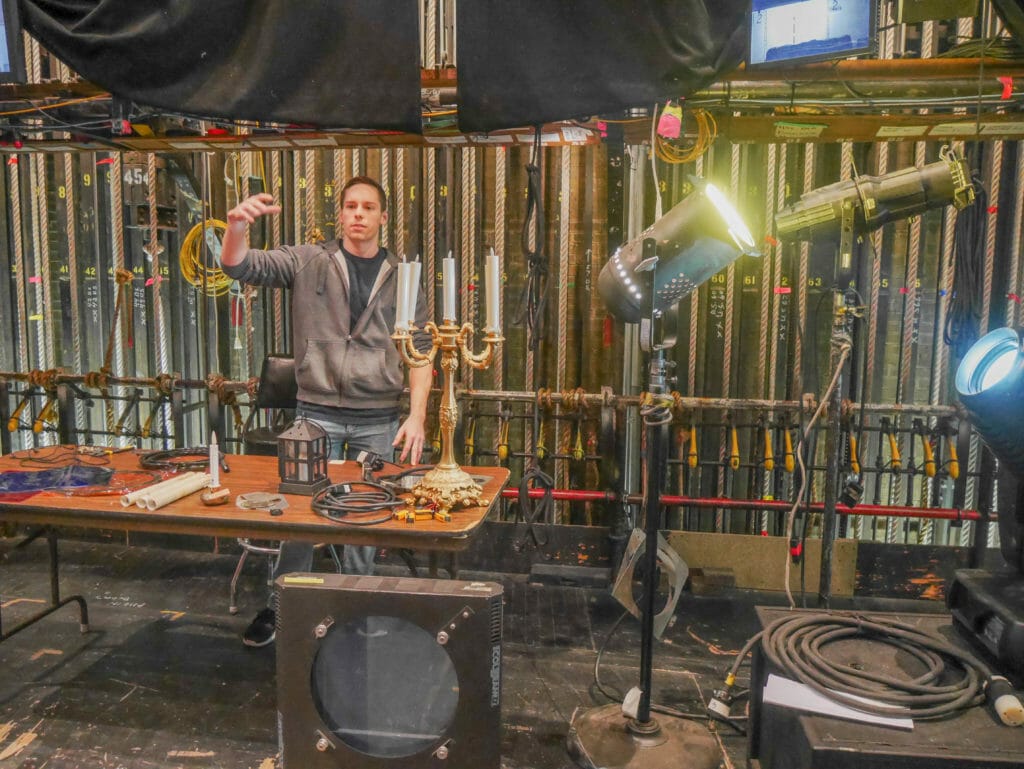Lyric Opera Welcomes You
A box of body parts…
A soldier’s helmet likely too small for someone today…
Human hair continuously recycled…
A knife secretly triggered to ooze gooey, but totally washable, red blood…
More than 7000 pairs of shoes…
Tableware for a Countess, a Pharaoh, gypsies, diplomat, or bohemian artists…
A hand-cranked machine that has been making wind since 1916…
These are but a few of the opera artifacts you see up close as you meander the Lyric’s labyrinth.
In a few hours time, you learn quite a bit about how the opera magic gets made. It’s fun!
It varies, but in this past month’s tour—and there are five more planned in the coming months—there were about 350 people in small gaggles doing staged pit stops throughout the Civic Opera House. The docents were mainly reps from the Guild Board. Our guide, Marc Lacher of William Blair, hails from Zurich, and was a particularly reputable Lyric booster who could compare the world-class status of the Lyric with European opera houses he has frequented.
Quick Lyric Opera History Recap
Taking box seats to hear a short rapid fire history of the Lyric was a first stop. You will learn many details of Lyric’s history, but some factoids really jump out and will cling to your imagination forever. For example, is there a connection between light bulbs and the Lyric? Yes—not because of the tasteful lighting you see in the grand performance space. Rather, it is because it was Thomas Edison who sent his assistant Thomas Insull to Chicago in 1892 to start what would become an electrical utility company. Insull got rich—very!—and was keen to enlist top architects of his time to build a grand opera hall for what was then the Chicago Civic Opera. The architectural firm he selected—Graham, Anderson, Probst and White—had built the Merchandise Mart, among other Chicago landmarks. These architects in turn commissioned a leading art deco sculptor to help create the Civic Opera House’s unique interior.
How empty the great hall feels!—especially for those of us who had the night before seen the debut of Carmen and just weeks before seen Lyric’s amazing production of Norma. This is a perfect time though to appreciate how Insull’s insistence that the box seats not wrap around the theater makes a difference. He wanted every seat to face the stage directly. The end result is a space that creates a megaphone for the stage.
That early Chicago Civic Opera came to a sudden crash in 1929 when Insull, like so many others, lost his fortune more or less overnight. This grand art deco hall wasn’t resurrected until the 1950’s when entrepreneurs took over the building and created the Lyric Opera.
The recent program notes for Norma, reminded of this history and the role that the great diva Maria Callas played in the early Lyric days. As you learn the details of how the baton of administering the opera company was passed down through the years, it truly amazes to ponder that the current Lyric President and CEO, Anthony Freud, is only the fourth one to be at the helm. How could that be—in perhaps THE leading Chicago arts organization that feels like it has been here since time began?
Orchestra Pit Stop
With this historic framing in mind, our next pit stop—literally a pit stop— was to take a comfy seat in the orchestra pit to learn from two musicians the nuts and bolts of how the musical magic gets made. Comfy as our seats are, we first learn that they are custom fit to each musician’s body so that the long hours of rehearsals and performance don’t take a toll. The musicians first gather to rehearse at a reading of the score—just the conductor and the orchestra. Then there is a stiz rehearsal, where the singers first meet and sing with the orchestra. Next comes the many rehearsals for staging that we learn might be 20 hours per act, with a final dress rehearsal. These are only rules of thumb. The orchestra does what it takes, and we learn for example that the new work Bel Canto had roughly double the number of rehearsals so the orchestra could master its exquisite score.
Then you learn about the audition process that orchestra members go through, packed with drama akin to what they later help unfold on the stage above them. You don’t audition once for the Lyric, but many times. If you play a popular instrument like the flute, you may be competing against more than 500 flutists in the first round. Some drop out due to self- selection, but eventually you might make it to the semi-finals. You are still behind a curtain, never seeing the judges nor they you. Imagine the shock when you get to the finals and Sir Andrew Davis, among others, is looking you in the eyeball. Those of us who are boosters for equal opportunity can feel pleased that this arduous audition process, largely behind a curtain, has resulted in a nearly 50-50 split between men and women.
For any given opera, we learn, the number of musicians playing in the orchestra varies—from 70 to nearly 100.
Here in the pit also we see the prompter’s box and a scrim that keeps the light from the stage from entering the orchestra pit and vice versa. This protective scrim is also called into service here and there by keeping objects from the stage from falling into the pit.
On to the Cat Walk
First walking past a jumble of set pieces that you recognize from the current operas on the stage, we get to see how the sets are raised and lowered. Today this is all manual. The Lyric Opera’s capital campaign though puts automation of this and similar tasks as a fundraising goal for sooner than later.
Acrophobes beware, you next have to muster your horse blinders in order to traverse the catwalk on the building’s 6th floor. Ropes and more ropes, attached to pulleys unseen, this is how the backdrops for different scenes are stored and later put into place.
Costumes Import and Export
Then we wander into the costume storage area, which could be a dry cleaners’ storage. Rack after rack of costumes with tags noting roles for three different productions. At the time of our tour, two were being performed (Norma and Carmen), with another in rehearsal (Eugene Onegin).
How interesting to learn how intertwined our nation’s major opera houses are – sharing costumes with one another as a matter of course. Though tailored to each performer, most costumes are also packed up and shipped out for another opera company’s use. You learn that there is a laundry on premises, but the only good cleaning each costume gets is at the end of an opera’s run. The hope is that this minimal laundering will extend the costume’s life.
If you are wondering if the last performance of any opera might smell a tad rank, so are we!
Props, Props and More Props
Want a bloody hand? Got a bloody hand!
Want a plastic apple that look real.? Got a plastic apple that looks real!
And a sword for all occasions—in fact, more than 7,000 armaments and weaponry.
One imagines that if legendary hoarder Andy Warhol was on this tour he’d plot a way to hide among the vast prop inventory for later linger and thrill.
Much as it feels like it goes on and on and on in every direction and accommodating the need for any and all things ever conjured by civilizations old to new, we learn that the bigger Lyric storage is in a warehouse on 89th and Halsted.
Some props that you see are antiques dating back to the 1890s. The best part was learning from our docent how this part of the opera magic making has or hasn’t changed with the times. Rain, for example, used to be made from rice but now is effected by empty pill coating capsules. Wind is still made by the same hand crank machine brought in to the building in 1916. We have Hollywood to thank for the REEL BLOOD, a washable red goo that might even fool a surgeon.
Wigged Out
Next we visit the wig making area and learn that what we see here, unlike the costumes, never leaves the Lyric’s building. These human hairs DO recycle from one performer to the next, maybe with a dye and blow dry or any number of stylings in between.
The first step is developing a wig head for each performer. How cool to see the components of the Commandante ghost of Don Giovanni come to life in the wig room!
Lighting- A Bigger Deal Than We Imagined
Next we go backstage again to meet one of the Lyric’s lighting experts. Above, around, and surrounding we see lights of all sizes and brightness spotlight or diffusing mood. If it feels like a rock concert, know that it could be. In fact, the Lyric lighting expert giving us the tour does use his expertise to moonlight at such. Most astonishing at this stop, however, was learning that in your typical opera performance as many as 50 lighting experts are pressed into service on the lighting crew to make it all happen as the lighting designer plans.
We learn that each opera has a first tech week in the summer, and then a later multi-day tinkering stage as the final opera set and staging is detailed.
Meet Your Near-Future Self
What opera tour would be complete without meeting the most crucial ingredient, an opera fan who has been living out their fascination with opera for decades. In our case we met Mark, a subscriber since 1966. It’s like staring at your future self in a mirror.
Mark boasts counting the number of different operas he has seen on Lyric’s stage, and how it beats out the Met Opera and all others. Also, he rattles off the number of recent world premieres—from Bel Canto to The Passenger and more.
Not unlike an enthusiastic Cubs fan in this most fateful of years, Mark recounts the early days when things weren’t as spot on as now. We learn that the pit has been lowered three times. The sound-absorbing velvet on the back of seats is now gone. He assures that those mics you see up high are really only for dialogue, WFMT broadcasts and for the relatively recently added Broadway musical fare.
Our visit with Mark was brief but long enough to know that he could probably talk forever about his Lyric Opera love. Know that by taking this tour and learning more about how the opera magic gets made you are taking a giant step towards opera groupie status too.
This is a very fun journey to make.
Even if you have never been to the opera before these tours are fascinating exposes of the details and logistics mastered to make every magical music moment.
HIGHLY RECOMMENDED.
This Lyric Opera season there are five more tours being offered. For tickets and information visit the Lyric Opera Backstage Tours webpage


